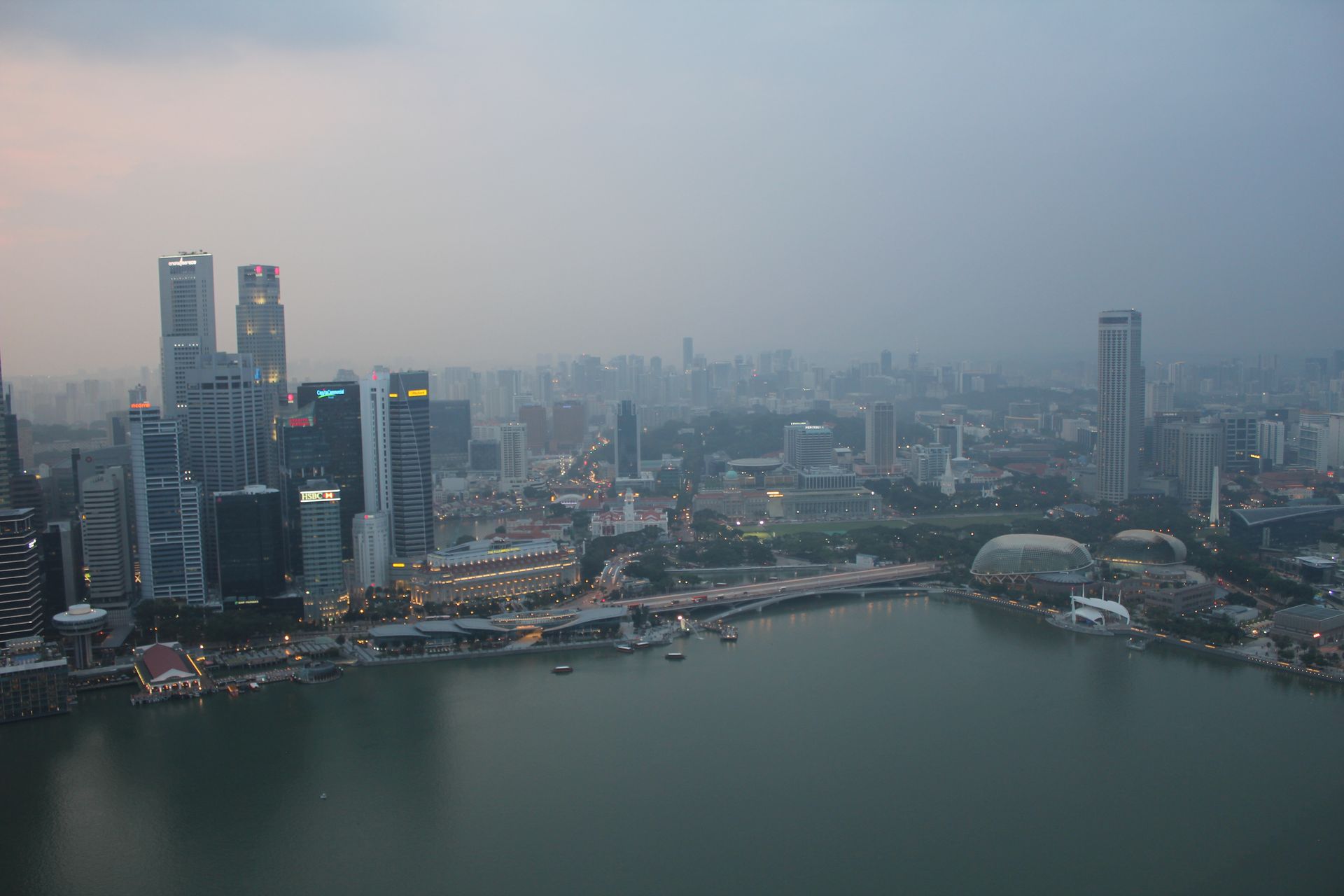Weather
Singapore Weather
Slide Title
Singapore Haze
Button
Singapore is located just north of the equator, 1 degree or 137 km, so it is always hot, no need for winter woollies!
The climate is classified as a tropical rainforest climate and has no distinct seasons. The geographical location and proximity to the ocean means that the humidity is high, rainfall is abundant and the temperature and pressure is pretty uniform.
The humidity levels are usually between 70% and 90% and it is muggiest in the morning. Thunderstorms occurs on approximately 40% of all days of the year but particularly during the monsoon seasons. The Northeast Monsoon is from mid November to early March and the Southeast Monsoon is from June to September.
It is almost always warm and wet. The upside is that the plant life is abundant and lush.
As far as seismic activity goes Singapore is relatively safe. The nearest major active faults are hundreds of kilometers away in Indonesia. Singapore was protected by the Sumatra landmass when the 2004 Indian Ocean earthquake and resulting tsunami occurred.
The Singapore weather forecasts are very reliable and many mobile Apps exists for your benefit.
Useful websites:
The Haze
Singapore and Southeast Asia in general, is plagued by hazy conditions in the dry season. The countries most affected by the haze are Singapore, Indonesia, Malaysia, Brunei Darussalam and to a lesser extent Thailand and the Philippines.
The haze is large scale air pollution and is mostly caused by agricultural fires in Indonesia. The biggest problem usually comes from the provinces of South Sumatra, and Riau in Indonesia's Sumatra island and Kalimantan on Indonesian Borneo.
The practice of slash-and-burn is used as a way to clear the land. This method is illegal but it is cheaper and faster than cutting and clearing using heavy equipment.
Fires that occur on peat lands can smolder a long time resulting in unhealthy hazy conditions and high sulfur emissions.
After peat swamp forests have been cleared and drained the peat soil is still unsuitable for planting because it is poor in nutrients and too acidic.
Fertilizer and chemicals need to be added to the soil but because the cost involved can be high the plant material left over from logging is set on fire.
The ashes fertilize the soil and neutralize the acidity in the soil. The land is then used for the production of oil palm and pulpwood.
The haze can affect peoples health by irritating the nose, airways, eyes and skin. Naturally people who already suffer from asthma, lung disease and skin allergies can be severely affected by the haze. The elderly and children are also more likely to be affected.
There are also economic damages resulting from the haze. Other than the high cost of fire fighting some of the other losses are reduced agricultural productivity as well as a decline in successful fishing.
Regional tourism is also affected which in turn affects airlines, airports and the tourism and hospitality industry in general.
There are several smart phone apps and websites to aid in tracking air quality or PSI levels:









